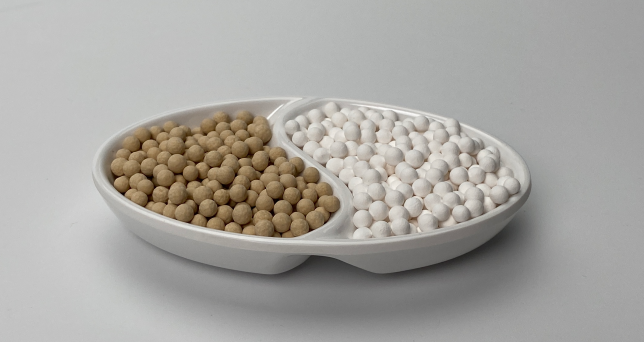Activated alumina is the most widely used desiccant in industrial drying. According to statistics, more than 80% of industrial air compression drying systems use activated alumina as the core drying medium. It typically achieves a -40°C dew point, which is sufficient for standard applications. Molecular sieves are only introduced when ultra-low dew points are required.
Activated alumina offers excellent versatility and is effective in drying over twenty types of common industrial gases, including acetylene, cracked gas, hydrogen, and oxygen.
Molecular sieves, with their unique molecular structure, have strong hydrophilic properties, making them ideal for deep drying scenarios with extremely low moisture levels, achieving dew points as low as -70°C. This raises a key question: If molecular sieves offer superior drying performance, why not replace activated alumina entirely?
The main reasons lie in cost-effectiveness and application suitability. Molecular sieves are significantly more expensive to produce. Using them in non-deep-drying conditions leads to resource inefficiency. More importantly, the two materials have very different adsorption behaviors under varying humidity levels:
● Under high humidity, activated alumina outperforms molecular sieves in water adsorption efficiency.
● Under extremely low humidity, molecular sieves demonstrate superior deep drying performance.
Based on this complementary behavior, the industry commonly adopts a combined use solution: activated alumina is used as a pre-drying layer to remove the bulk of moisture, followed by molecular sieves for deep drying. This stepwise drying system maximizes the strengths of both materials, delivering optimal economic and technical performance—making it a preferred solution in industrial gas drying.
Post time: Jun-05-2025


